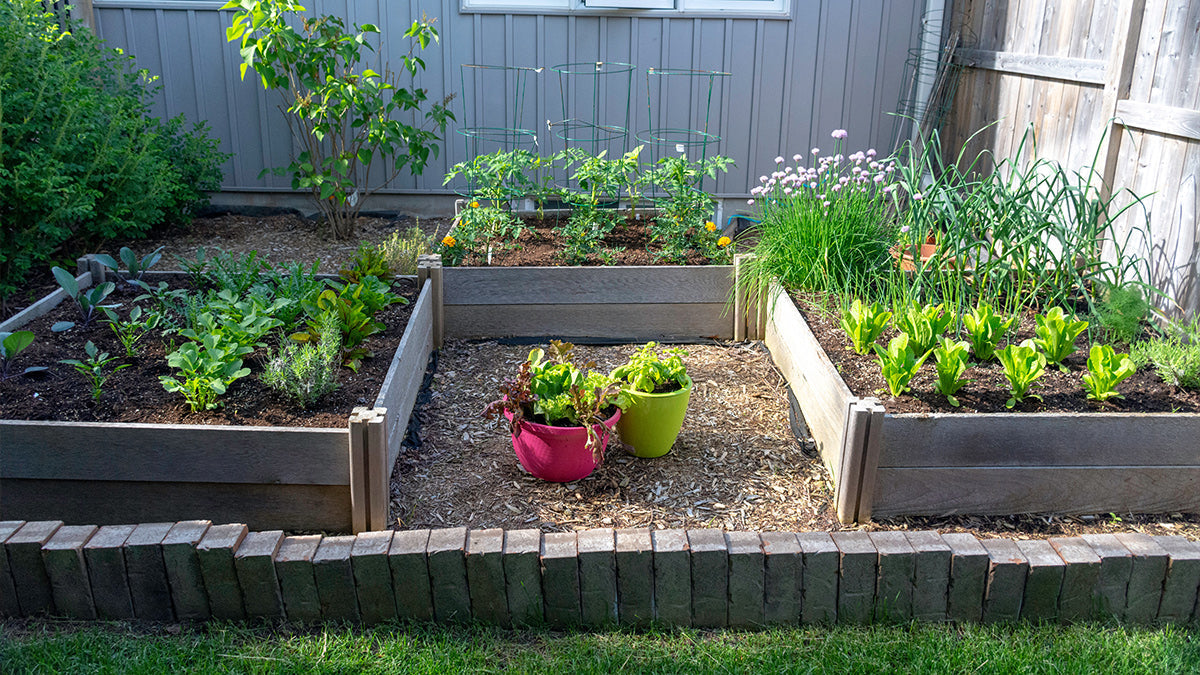There's something deeply satisfying about walking into your backyard and picking tonight's salad straight from the soil.
Maybe it's the taste of sun-warmed tomatoes that actually taste like tomatoes. Maybe it's knowing exactly where your food came from. Or maybe—and this is the part our grandparents understood so well—it's the quiet confidence that comes from knowing you can feed your family with your own two hands.
This National Gardening Week, we're celebrating a truth that's as old as civilization itself: A garden is more than just a hobby… It's one of the smartest investments you can make in your family's security.

Why Every Prepared Family Needs a Garden
Your emergency food storage is essential. It's your insurance policy against disruptions. But a garden? That's your renewable resource. It's the difference between having food and being able to create food.
Think about it this way: Your stored food will eventually run out. But a packet of seeds can feed your family this year, next year, and for generations to come—especially if you choose the right ones.
Plus, there's a beautiful overlap between gardening and preparedness. Many of the vegetables that grow easily in home gardens are the same ones that preserve beautifully. That means every harvest gives you two options: enjoy it fresh tonight or add it to your long-term storage!
Starting Small: The No-Overwhelm Approach
If you've never gardened before, here's a secret: You don't need acres of land or years of experience. You just need to start.
Begin with the "Easy Five":
- Lettuce – Ready in 30 days, grows in containers
- Radishes – Fastest veggie to harvest (about 25 days!)
- Green beans – Prolific producers that freeze beautifully
- Tomatoes – One plant can produce 10-15 lbs of fruit
- Herbs – Basil, oregano, and parsley grow like weeds
Even a small 4x4 foot garden bed or a few containers on a sunny balcony can produce surprising amounts of food. One tomato plant in a 5-gallon bucket can give you fresh tomatoes all summer long.
Crops That Work Twice as Hard
The smartest preparedness gardens focus on vegetables that serve double duty—delicious fresh and excellent preserved.
Storage Superstars:
Beans (Bush varieties): Eat them fresh all summer, then let the last crop dry on the vine for soup beans that can last years. Both Blue Lake and Black Turtle varieties are particularly good for this dual purpose.
Winter Squash: Butternut and other winter squashes store for months in a cool, dry place—no processing needed. Plus, their seeds can be saved and replanted.
Carrots: Enjoy them fresh, then dice and dehydrate the surplus for soups and stews. They rehydrate beautifully and maintain their nutrition.
Peppers: Whether sweet bells or spicy varieties, peppers are incredibly versatile. Eat fresh, freeze whole, or dry them into flakes and powders.
Tomatoes: The ultimate preserving vegetable. Can them, sauce them, dehydrate them into "sun-dried" tomatoes, or freeze them whole for winter soups.

The Magic of Heirloom Seeds
Here's where gardening becomes true preparedness: choosing heirloom seeds over hybrid varieties.
Heirloom seeds are like the gift that keeps on giving. Unlike hybrid seeds (which don't reproduce true to type), heirloom varieties let you save seeds from your best plants to replant next year. It's the ultimate in self-reliance—you're not just growing food, you're growing future gardens.
This is how our great-grandparents gardened. They'd save seeds from their best tomatoes, their most productive beans, their sweetest melons. Over time, these seeds became perfectly adapted to their local growing conditions.
Simple Preservation
The real magic happens when you combine gardening with basic food preservation skills. You don't need fancy equipment:
Freezing: Blanch green beans or broccoli for 3 minutes, cool in ice water, and freeze in meal-sized portions.
Dehydrating: Even a basic dehydrator (or your oven on low heat) can turn excess produce into shelf-stable foods. Dried tomatoes, zucchini chips, and herb seasonings are family favorites.
Root Cellaring: No actual cellar needed! Many vegetables like potatoes, carrots, and winter squash store for months in a cool, dark place.
Fermenting: Turn excess cabbage into sauerkraut or cucumbers into pickles. These probiotic-rich foods are both delicious and shelf-stable.
Making It a Family Adventure
One of the best parts about a preparedness garden? It's a life skill you pass on to your children. Kids who grow their own vegetables are more likely to eat them (win!), and they're learning self-reliance without even realizing it.
Give each child their own small plot or container. Let them choose what to grow. Make it fun with garden markers they decorate themselves. When they see those first green shoots pushing through the soil, they'll understand something important: They have the power to create their own food security.
Your Garden, Your Security
A preparedness garden doesn't have to be perfect. It doesn't have to be huge. It just has to exist.
Start where you are, with what you have. Even if it's just a few pots of herbs on your windowsill, you're building the skills and confidence that come with growing your own food.
And keep in mind that every single tomato you grow is one less tomato you need to buy.

Ready to take your garden from seasonal hobby to year-round food security? Our Patriot Seeds Survival Seed Vault gives you 20 varieties of heirloom vegetables—enough to plant a substantial garden that can feed your family year after year.
These aren't just any seeds; they're open-pollinated heirlooms that let you save seeds from your harvest to replant indefinitely. It's the perfect foundation for your preparedness garden, whether you plant them this spring or save them for when you need them most (they store for up to 5 years!). Because true self-reliance starts with a single seed.

